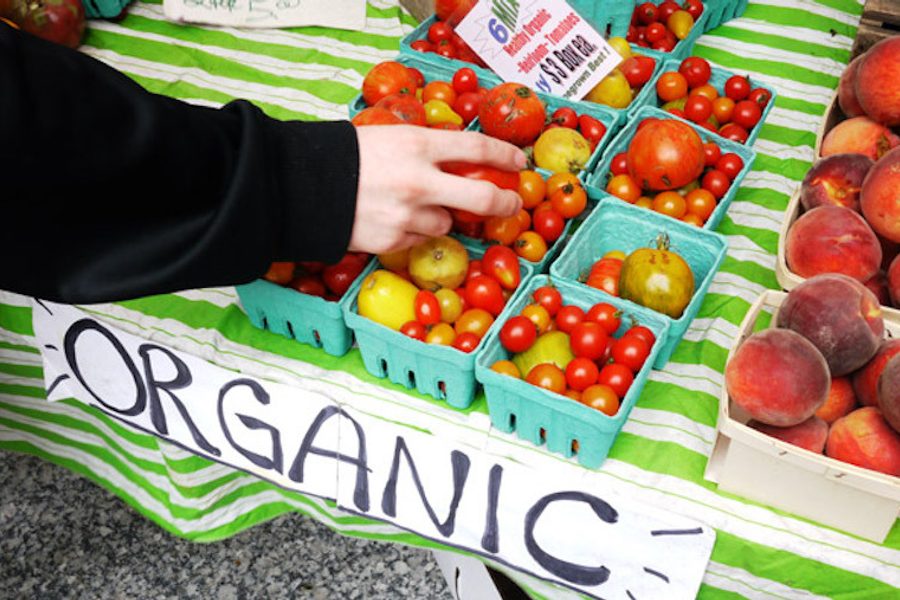
“Sorry — Organic Farming is Actually Worse for Climate Change” reads the title of an October 22 article in the MIT Technology Review.
It’s true, news editors take a certain glee in the public execution of sacred cows, and a cornucopia of similar, snarky headlines were pumped into the already-clogged arteries of internet news feeds after the publication of a recent study of organic agriculture by Cranfield University in the United Kingdom. Like the Review’s, the gist of them all: Contrary to its claims, the organic food movement is bad for the planet.
The truth is more complicated.
Agriculture is a major contributor to global greenhouse gas emissions, and the study, conducted in England and Wales and published in the journal Nature Communications, set out to assess how a nation-wide switch from conventional to organic agriculture would affect net emissions.
In the Review article, James Temple summarizes the study’s findings:
The good news is [a shift to organic agriculture] would cut the direct greenhouse-gas emissions from livestock by 5% and from growing crops by 20% per unit of production. The bad news: it would slash yields by around 40%, forcing hungry Britons to import more food from overseas. If half the land used to meet that spike in demand was converted from grasslands, which store carbon in plant tissues, roots, and soil, it would boost overall greenhouse-gas emissions by 21%.
On October 23, the Organic Center, a Washington, D.C.-based nonprofit dedicated to scientific research on organic food and farming, published a rebuttal: “These articles are using the same tired fallacies that The Organic Center has debunked before, and we’re returning to do it again.”
First, the Center takes on the study’s assumption that the decreased productivity of organic farming would require that, to feed the ever-inflating human population, more wild lands be plowed under:
“The authors argue that this reduction in productivity would require large increases in land devoted to crops in other parts of the world, leading to the destruction of grasslands and forests that are critical sequestration pools for carbon. What the authors overlook entirely is the ability to fill that production need by reducing food waste. The Food and Agriculture Organization of the United Nations estimates that around a third of all food produced gets lost or goes to waste. The world produces an over-abundance of food for our global population (despite the tragic growth of food instability and hunger around the world, in part due to food waste, inefficient diets, and unequal distribution), which means that the drop in productivity could be addressed by reducing waste and loss rather than increasing extranational production.”
Next, the Center notes that it’s a bit ironic to accuse organic ag of the future destruction of wild lands considering that conventional agriculture has caused and is causing the “extensive loss of critical grasslands and forests.” In fact, according to the Yale School of Forestry and Environmental Studies, industrial agriculture is behind 30% of the deforestation of Africa and Asia and 70% of Latin America.
On the other side, the Center writes, “the organic community has spent a considerable amount of time reflecting on this very issue, and is working toward building native ecosystem preservation into the organic standards.” For example, in April 2018, the U.S. Department of Agriculture’s National Organic Standards Board passed a recommendation on “Eliminating the Incentive to Convert Native Ecosystems to Organic Production.” In short, the resolution deters the conversion of native ecosystems to agricultural land by denying certified organic status to crops or animals raised there until 10 years after the conversion.
Next, the Center argues that the productivity gap between conventional crops and organic ones is not inevitable:
Organic yields have been increasing over the past decade, despite a dearth in funding for organic research … thanks to the limited studies that have tackled on-farm challenges for organic farmers. According to a study by researchers at the University of California, Berkeley, research supporting organic practices could further decrease or even eliminate yield gaps entirely through the use of best management practices and further research. The organic sector has already seen the benefits of the small amount of funding directed toward overcoming challenges to organic production, and several studies have found that best management practices can result in yields comparable to conventional. Because organic has been scientifically proven to use techniques that reduce greenhouse gas production and increase carbon sequestration in the soils while supporting ecosystem and human health, our focus should be on methods to support organic research to close the yield gap.
Finally, the Center denounces the “myopic view” that organic agriculture cannot work on a large scale, asking, instead, in what sense is conventional agriculture “working” when “it depletes our soil, destroys pollinator populations, and depletes carbon stores”?
The Center concludes: “Without ecological production systems like organic, we won’t be able to support food production in the long term.”
Joseph Bullington grew up in the Smith River watershed near White Sulphur Springs, Montana. He is the editor of Rural America In These Times.






